Lofty Lushan Mountain
Temples in Hidden Places
On the First of August
Wheels by the Water
Share your travel story with regional@chinadaily.com.cn
Site Memorial of August 1 Nanchang Uprising
( jxwmw.cn, chinaculture.org )
Updated: 2011-09-13
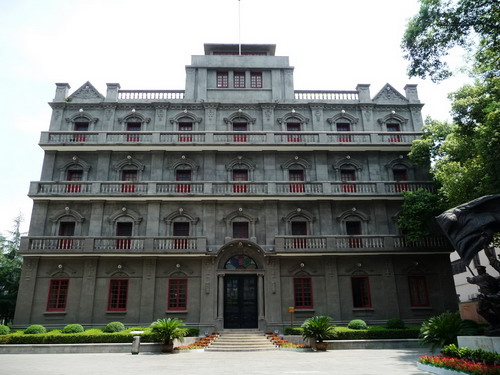 |
|
It is a five-storied grey brick-and-wood building constructed in 1922. |
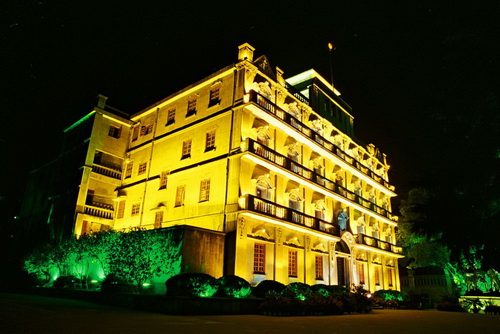 |
| Site Memorial of August 1 Nanchang Uprising |
Site Memorial of August 1 Nanchang Uprising lies at Xiamachi, Zhongshan Road in Nanchang city of Jiangxi province. It is a five-storied grey brick-and-wood building constructed in 1922, and used to be the Grand Hostel of Jiangxi province. The planar shape of the building is like the Chinese character "中", which means "center" and is a square with a patio in the middle.
On April 12, 1927, Chiang Kai-shek rose up against the revolution. He slaughtered the members of Communist Party and the masses supporting the revolution without restraint. To save the revolution, the Communist Party dispatched Zhou Enlai to Nanchang city to organize the Front Line Committee for the Armed Uprising in Nanchang city.
To prepare for the uprising secretly, they rented all the rooms in the Grand Hostel in Jiangxi province for the Front Line Committee and the headquarters of the uprising. It was here that Zhou Enlai, Zhu De, Ye Ting, He Long and Liu Bocheng discussed the plan of the uprising, and drafted the Declaration of Bayi Revolution, the General Publicity Outline for the Bayi Revolution and the General Publicity Outline for the Land Reform.
They declared war at 2am on August 1, which wiped out over 10,000 soldiers of the defending troops in Nanchang city. They then occupied the city.
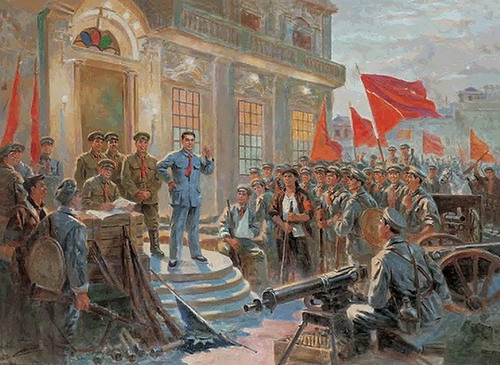 |
| An oil painting of the August 1 Nanchang Uprising |
The uprising was the start of the Revolutionary War carried through by the worker-farmer armed force, which was founded by the Communist Party. Later on, August 1 became the birthday of the Chinese Workers' and Peasants' Red Army, which was renamed as the People's Liberation Army (PLA) later.
The rooms in the site such as the Meeting Hall of the Headquarters, the offices of Zhou Enlai and Lin Boqu are restored to the original appearance. The Memorial of Bayi Uprising was also built to exhibit the documents and photos of the uprising.
In front of the memorial there are 5 statues which are the leading leaders of the uprising. They are Liu Bocheng, Ye Ting, Zhou Enlai, He Long and Zhu De. This is the sacred place where the PLA was born. On the stone tablet, wrote by Jiang Zemin (former Chinese president) to mark the 70th anniversary of the victory of the uprising.
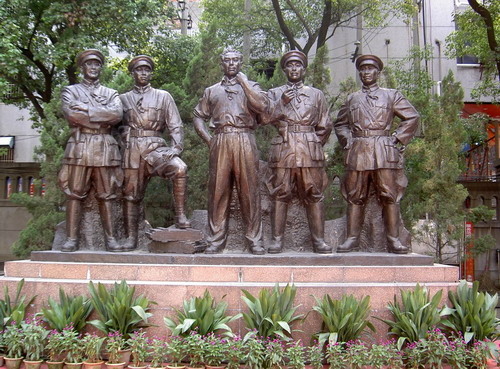 |
|
In front of the memorial there are 5 statues which are the leading leaders of the uprising. They are Liu Bocheng, Ye Ting, Zhou Enlai, He Long and Zhu De. |
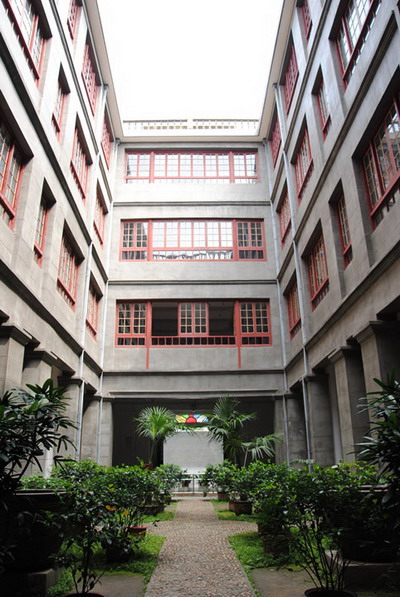 |
| Inside the Site Memorial of August 1 Nanchang Uprising |
The central part of the floor is a courtyard with four big vats. It is said that because of the shortage of drinking water at that time, workers of the hotel and some neighboring residents voluntarily carried drinking water to the four vats for the troops. On both sides of the courtyard are the display rooms to show the weapons and medical instruments the uprising troops once used.
The southern hall of the first floor was the meeting room of the uprising headquarters. It had been the hotel’s celebration hall before the uprising. During the uprising preparation, many meetings of the commanders and officers of the uprising troops were held here and the order of the uprising was issued from this hall. Among the articles on display, the 4 old-fashioned wooden armchairs, 2 tea tables on the left and the mirror are all original. The rest are reproductions. To the left of the celebration hall was the No 10 guestroom where the leading comrades and workers of the troops lodged. To the right of the celebration hall was the No 9 guestroom where the staff officers for Liu Bocheng, chief of staff of the uprising, worked.
On the second floor there is the exhibition hall, which consists of antechamber, No 1 display room and No 2 display room. In the antechamber of the hall stand the bronze busts of the five leaders of the uprising. Behind the busts is a large map of Nanchang city in 1927. The No 1 display room mainly introduces the historical background and decision of Nanchang Uprising. And in the No 2 display room, there is the No 25 guestroom used to be Zhou Enlai’s office, and the No 20 guestroom where Liu Boqu, chairman of the Financial Department of the Revolutionary Committee, worked and lodged. There is also a sand showing model to show the whole process of the uprising.
The third floor display hall displays the whole process of the uprising fighting with photos and documents. There are also a lot of inscriptions and photos left by the Party and Government officials when they visited the museum. Former President Jiang Zemin’s inscription is written in 1997.
The uprising marked a new era in the CPC's history independently leading armed uprisings and turned a new page in the annals of the Chinese Revolution. Whereas the shots and smoke vanished with the lapse of time and the outcry of battle faded into history, the uprising will be remember for ever and ever.
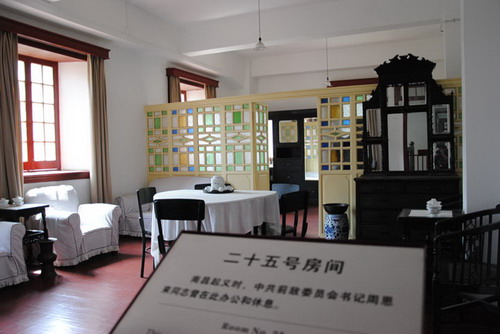 |
|
Room No 25 was where Zhou Enlai worked and took rests during the preparation of the uprising. |
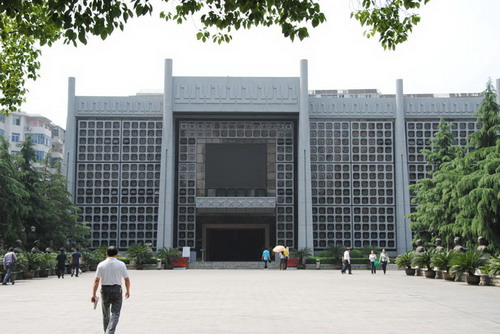 |
| The new site memorial building |
 |
| Weapons exhibited in the memorial |




